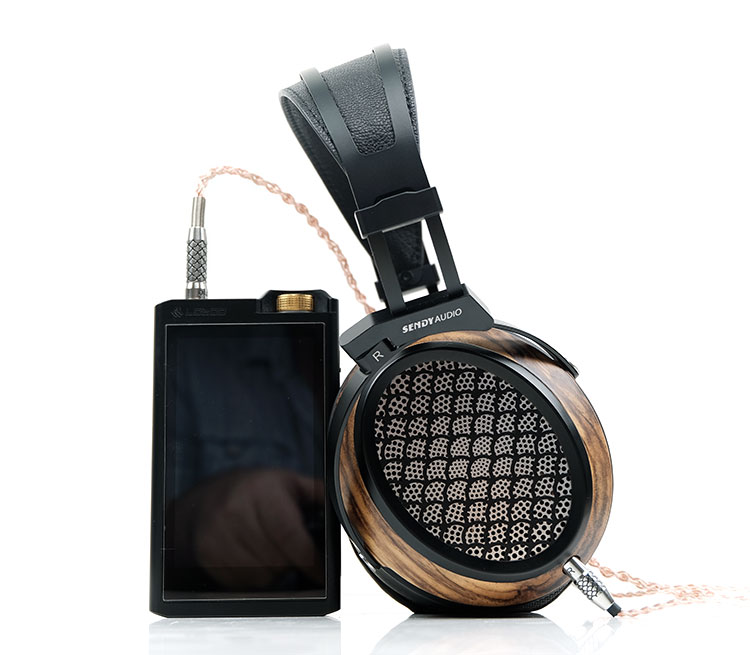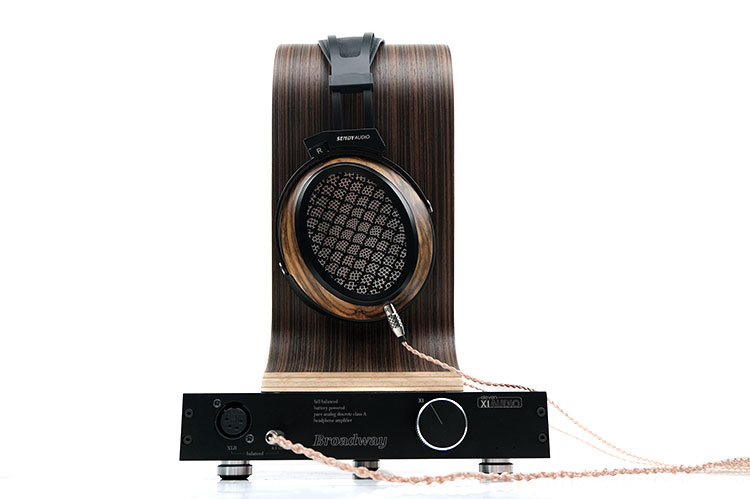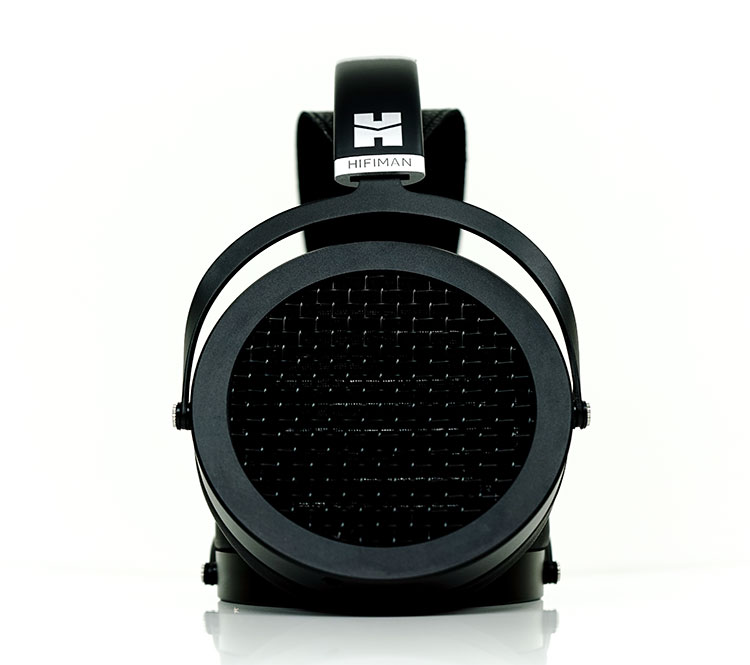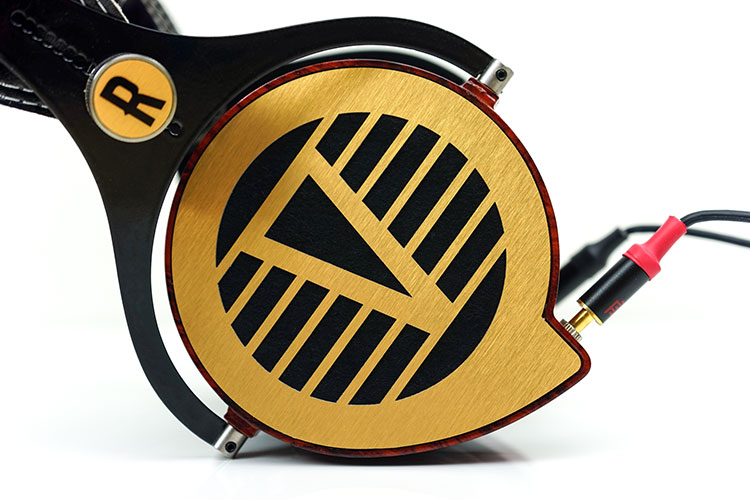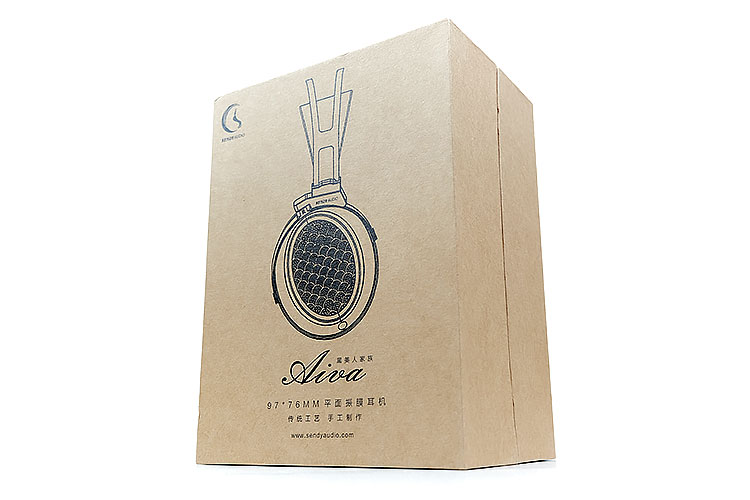Sound Impressions
Summary
The Aiva doesn’t really follow the norms for planar headphone tuning and in turn, it sounds a lot more ‘contrasty’, musical and engaging rather than shooting for absolute neutrality or accuracy. With an almost ethereal high-end performance, a warm and punchy low-end and vocal presence up to 1-2k that is quite clear sounding, the tuning is more for ‘fun’.
The hot spots in its FR elevation, whilst not wholly even-handed, shoot for excitement or immediate engagement shall we say. I would not go as far as to say this gravitates to some sort of standard V-shaped response curve because there are some oddities in the lower-treble that tend to accentuate that upper-treble brilliance but if you are looking to avoid neutral then the Aiva is a good place to start.
In some ways, I have heard aspects of this type of presentation with the AEON Closed, with a similar nod to the coloration on the low-end but nothing quite like that treble performance with the closest being the slightly more even keel of the Sundara top-end.
Preferences
If you love sparkle, headroom, and a very article upper-treble response then the Aiva will nail it for you. If you enjoy a high timbral contrast between a punchy low-end with some warmth and that treble odd-harmonic overtone that teases out acoustics plucks with a high degree of clarity, then the Aiva is an excellent place to start.
What it does not focus on so much are complex musical midrange passages where it requires a bit of air and presence from around 3-5k. The Aiva dips there and in part accentuates that quick treble rise and forward-sounding performance. That kind of tuning works wonderfully well for genres such as trance, synth wave and plenty of modern R’n’B where the mids are relatively open and free sounding. However, less so for rock and indie where often you need that additional bump for presence just below the percussion work to prevent them from overpowering vocal harmonics.
Staging
The Aiva is pretty solid for depth and height. In fact, the staging on the Aiva for me is quite tall and airy with plenty of headroom. Depth is a little harder to discern because it is not quite as open or spacious sounding as the more linear and flatter sound of the Verum 1 or the Sundara, two of its closest competitors. For me, there is just a slight edge of the sub-bass response and slightly more bias to mid-bass punchiness.
Staging width is more to the narrow side of things with that 3-5k upper mids to lower treble dip pushing back some instrumental presence and sucking a touch of air out of that region. A 5k rise can help retain a bit more instrumental presence and body to compensate for the upper-treble sparkle but not so much with the Aiva.
One thing I can say that this is not a veiled sound at all because of that airy top-end. Rather your ear is split more between the bass-to mids and upper treble and what’s happening there. This is what grabs you first.
Bass
I quite like the bass coloration on the Aiva. Sure it is not dead flat or linear like the Verum 1 or the Sundara but its got a nice level of PRaT to it with a punchy mid-bass and some decent but not overwhelming sub-bass presence.
I was comparing it to the Brainwavz as part of our comparison process and found the Alara just to have a little more sub-bass weight and warmth/body but it wasn’t as pacy or punchy as the Aiva. Overall, I found the Aiva low-end fairly nippy, quite well separated with not so much in the way of bloom but on the more intimate side of things.
As such, I would define it as a more aggressive but not dominating low-end, one that is very nicely suited to a traditional trance where the mid-bass speed and presence is key to delivering a fast BPM without sounding smeared.
Mids
What you take out of the Aiva’s midrange performance will gravitate on your musical preferences. There is a nice little welcome lift in the lower-mids up to 1-2k so vocal clarity and micro-detail is actually very good, slightly north of neutral in positioning but not overly forward or shouty to my ear. Beyond that, there is a dip that travels right into the lower treble.
Harmonic balance
Two things that come out of that dip as a result. The first is time harmonic balance in instrumental timbre. With an elevated upper treble and less lower-treble presence, you get a very clean edge to the Aiva’s instrumental tone due to the more dominant upper harmonic order.
The dominant overtone also provides that exciting ‘contrast’ with the warmer lower-pitched instrumental timbre that pulls from that elevated mid-bass performance of the Aiva. You get some decent instrumental presence and excellent clarity but you also get that “HiFi” ethereal tone which means slightly less body in vocals and instruments.
Positioning
The second aspect is stage positioning. For voicing that straddles into the upper mids and lower treble you will find they deliver a lot less presence, especially if higher pitched percussion passages are dominant in any track mixing. Percussion pulls a lot of harmonic presence from the upper-treble amplitude so if it is elevated there then it is going to push down on those vocals which in turn, will sound a little recessed.
Take out any dominant percussion work, say switched to a more stripped-down vocal-dominant track such as Dua Lipa’s “Homesick and the FR tuning of the Aiva is much more preferable. This is where I think it excels and I did say right at the start the Aiva tuning seems to adore modern R’n’B and vocal-centric performances which tend to keep the midrange instrumental mixing minimal.
Treble
The upper treble from around 7-10k is north of neutral, forward, and very articulate. The lower-treble is much more muted which is why you will not hear too mush splashiness and peaky sibilance on the Aiva despite its abundance of sparkle. There is no shortage of airiness in the Aiva treble with some stellar headroom and great staging height. It also has a lovely turn of pace, much more so than the Alara and completely the opposite of the slower darker Verum 1.
However, the lack of lower-treble amplitude just robs the treble of a little body, hence my previous use of the term ethereal. I have heard electrostatic being mentioned when referring to the Aiva treble and in some ways, I get that because of the way the treble can come across as delicate but pacy with plenty of detail shining through.
Control
I will say this though. A good amping stage will keep the best level of control on the Aiva upper-treble which is when it sounds optimal for my preferences. Amps such as the 1.5W at 32Ω Xi Audio Broadway and the tubes of the 1W Auris HA2-SE or the HiBy R6 Pro DAP delivered the most even sounding treble on the Aiva.
Once I pulled back on the power it started to sound a little forced and unnatural even with the likes of the flagship Sony 1Z DAP which, for me, does not deliver enough current or power to the Aiva.
Matchability
Efficiency
The Aiva is rated at 32Ω and 94dB SPL which is quite similar to the 94dB SPL rating of the Alara. Consequently, the dynamics of driving the Aiva properly are similar to the Alara. Smartphones are out, they simply do not deliver enough voltage and current to scale the Aiva properly or offer enough volume headroom. Even with a dongle adaptor on a Huawei P20 the Aiva suffered from a shrill top-end and a soft flabby low-end. A distinct lack of control
DAPs
The good news is that there are a number of decent powered DAPs that the Aiva sounded really good with. Ultimately, this is synergy for preference but connected to the Lotoo PAW Gold Touch, iBasso DX220 and especially the HiBy R6 the performance was excellent in balanced and unbalanced outputs.
The HiBy R6 Pro had the ideal synergy with that slightly roll-off top-end, thicker low-end and mids which seems to gel wonderfully well with the Aiva. Both the DX220 (AMp1 MK II) and the Lotoo upped the resolution and separation but left things a bit too neutral for my liking. I advise the AMP 8 balanced with the DX220 to get some swagger back in the Aiva performance.
The only high-end DAP we had issues with was the Sony 1Z which felt a little underpowered on the unbalanced output. On balanced, I had enough headroom but I was not such a fan of the synergy overall. Something about the digital treble of the 1Z which tends to tease out a harder sound than the other DAPs despite the excellent low-end performance on the Aiva.
AMPs
However, to really hear the Aiva sing I suggest a solid desktop amp that has a natural sounding presentation and not too bright to avoid anything I would describe as a steely sound. Tube amps such as the Auris HA-2SE and the ALO Studio 6 have plenty of power to drive the Aiva and you do start to hear much better low-end clarity and a more controlled smoother treble performance.
You can retain a punchier smooth sound with something as beastly as the solid-state Violectric V281 but with the inclusion of that 4.4mm connector the makers of the Aiva really want you to pair these with balanced 4.4mm capable DAPs IMHO.
Unless of course, you happen to have the Xi Audio Broadway battery-powered desktop amp with 4.4mm balanced output. The synergy between the Aiva and the 32Ω 1.5W solid-state Broadway was excellent.
Admittedly, we had the AK380 docked in a balanced output configuration and it is a very smooth player but even so, connected to the Broadway, the Aiva treble balance and midrange clarity were much better than I could have hoped for. So yes, the Aiva can scale really well indeed and if you do want to hear it perform optimally I do suggest you invest in a decent, ‘neutral to natural’ sounding amp with about 1W of power into 32Ω.
Select Comparisons
Hifiman Sundara
SRP $499
Technical
The Sundara has actually seen a drop from its original price of $499, albeit in a continual promotional sale. At $349 it is stunning value and goes head to head with the Verum 1 though, to be honest, both are very different sounding headphones.
The Sundara looks very different from the Aiva. It is bigger, more traditional in its rounded cup shape and more open in its grill design. It is also a stiffer design, less articulate in its pivot blocks and with a notchy headband adjustment. The Sundara’s all black finish is as ‘noire ‘as it gets compared to the warmer woody tones of the Aiva finishing.
Surprisingly, the Sundara is lighter than the Aiva despite having a larger form factor at 372g compared to 420g. Much of that additional weight will be due to the wood cups which carry a bit of additional density and the rest due to the double-sided magnet array in the Aiva compared to the lighter single-sided build of the Sundara. Both I would class as quite comfortable on the head with the pressure strap system and the Sundara clamping just a little harder than the Aiva.
Performance
The Sundara is rated at 37Ω and 94dB SPL compared to the Aiva’s 32Ω and 96db SPL. On paper, there is virtually nothing to separate them in terms of current and levels of sensitivity save for a marginal 2dB SPL gap.
That gaps pretty much plays out as you would expect on powerful DAPs such as the Lotoo PAW Gold (0.5W into 32Ω) and moderately powered desktop amps such as the Auris HA-2SE (1W into 32Ω). On both amp stages, the Sundara required a touch more current and volume than the Aiva. Not a huge gap, maybe about 3-4 digital steps on the Lotoo and a similarly small nudge on the Auris’s analog pot.
Tuning
Low-end
These two planars have quite different presentations with one aiming for a fairly neutral and clean sound and the other going for a punchy musical presentation. The Sundara is far more neutral on the low-end with a very linear bass response right down to 20Hz. The Aiva bass performance is a little more colored with a bit more mid-bass emphasis and warmth.
Listening carefully and the Sundara does a little better for sub-bass definition whereas the Aiva works its magic just a shade closer to the mid-bass delivering a punchier sound. You could argue that the Aiva is going to give you a bit more fun and impact on the low-end compared to the Sundara which aims more for a neutral delivery with a bias to accuracy and coherency.
Mids
Lower mids are closer in stage positioning and a little warmer on the Aiva compared to the flatter more spacious sounding Sundara up to 1k. Instrumental presence, such as rhythm guitar work is much more engaging and immediate on the Aiva compared to the flatter neutral Sundara lower-mids.
Beyond 1k, both headphones take a considerable dip and any voicing in that dip is going to sound a bit more recessed as a result. Voicing up to 1k though has a bit more presence on the Aiva compared to the Sundara which opts instead for more distance and width in its midrange.
However, the Sundara dip is not quite as sustained and does indeed elevate around 3-4k (upper mids) whereas the Aiva only has a minor bump at 4-5k. The Aiva only really gets a burst of energy around 7-10k which is an area that the Sundara has some emphasis on also.
Treble
Despite both having a fairly lively and detailed treble the Sundara performance has a touch more coherence and body than the Aiva. That upper-mids dip combined with the big jump on the Aiva treble provides for an exciting contrast to its mid-bass warmth but also leaves the higher-pitched treble a little on the lean side and ethereal side by comparison. Odd-harmonic overtones sound crisp and clear on guitar plucks but notes lack a little body on percussion notes by comparison.
Verum Audio Verum 1
Crowdfunded price $349
Technical
These two headphones are both open-back designs though for me the Verum 1 has much more open space on the faceplate grills than the Aiva. Both use a double-magnet array system and AI trace coils though the size of the moving part of the planar diaphragm is a little bit bigger on the Verum 1.
The Verum 1 is a much bigger headphone compared to the Aiva. It has shades of LCD-2 more than AEON which is where the Aiva tends to sit with its compact elongated cup size. It also weighs a bit more at 520g compared to the smaller Aiva’s 420g. Both use pressure strap and adjustable spring steel headbands so the pressure balancing is excellent but you do feel that additional 100g on your head with the Verum 1.
The wood cups on the Aiva are made from genuine zebrawood whereas the Verum 1 is a liquid zebrawood styling finish Overall, the Aiva is going to sets hearts fluttering more than the outlandish Verum 1 design.
The Aiva uses a pleather foam wedged hybrid set of pads compared to the real leather wedged pads of the Verum 1. Both sets of pads are very comfortable. Both of these headphones do really well in the comfort stakes. However, the lack of depth in the Aiva pads compared to the Verum 1 pads means for some the drivers are going to much closer to your ear.
Performance
The Verum 1 is rated at a fairly low 12Ω and a reasonably efficient 96dB SPL. Compared to the 32Ω and 94dB of the Aiva the Verum 1 should be the slightly easier of the two to drive but in our testing we found it to be the other way around.
Again, using the desktop 1W HA-2SE from Auris we found ourselves pushing up the volume a little more on the Verum 1 compared to the Aiva. Some of that volume change could well be a sensitivity to the tuning differences and more aggressive treble of the Aiva compared to the darker more distant sound of the larger Verum 1 driver. We found less of a gap when we compared the two off the Lotoo PAW Gold Touch 0.5w 32Ω load but the still, for us, the Aiva was the more sensitive of the two headphones when volume matched.
Tuning
Low-end
Quite the contrast these two tunings also, much more so than the Sundara comparison. The Verum 1, like the Sundara, has quite a linear low-end to midrange response, much more so than the Aiva which tends to bump a little towards the mid-bass and drop a touch before rising again in the lower-mids up to 1k.
Both have a fairly solid low-end but the Verum 1 seems to have slightly more sub-bass weight and the Aiva, like the Sundara comparison is a little closer, tighter in space and punchier to my ear.
Mids/Timbre
Unlike the Sundara though, the Verum 1 a bit warmer and with more lower-mids instrumental presence richness and authority which I really like. I did compare it in our original review to an LCD-2 type sound and I stand by that in terms of PRaT and texture. The Aiva also has a fairly elevated lower-mids up to 1k and much like the Verum 1 does a really nice job of pushing forward instrumental presence and any vocals that pitch 1k and below.
However, their timbre is different due to the way the Aiva teases out a lot more treble odd-harmonic presence. The Verum 1 is darker and grander sounding to my ear than the Aiva. It does have the better treble body and a wetter more even-harmonic overtone to its timbre that reaches right down into the lower-mids.
The Aiva, by contrast, has a cleaner sounding timbre because of that treble overtone. It provides for much more energy and clarity on instrumental cues such as guitar plucks and solos whereas the Verum 1 emphasis is on s smoother richer delivery of notes.
Treble
There is less of an upper mids dip on the Verum 1 but also far less 7-10k treble emphasis compared to the Aiva. So, whilst, the FR is perhaps the more coherent of the two you will find the top-end of the Verum 1 far more relaxed compared to the more forward and aggressive Aiva treble.
Perceptibly, the Aiva will sound the faster, more exciting or articulate of the two headphones but neither lack in detail. Rather this is a timbre changing tuning and with it comes down to personal preference. The harder-edged cleaner top-end of the Aiva versus the smoother, darker fuller-sounding treble tuning of the Verum 1.
Brainwavz Alara
SRP $499
Technical
The Alara is quite a different proposition on a visual or design level. Much like the Sundara, it treads the traditional all-black aesthetic using a mix of pleather, aluminum alloy, and hybrid pleather/fabric memory foam pads.
Like the Aiva, the Alara uses an elongated cup design but unlike the Aiva the headband is more like the older Oppo PM series single headband and memory foam wrap. The Alara trades in the wood build elegance of the Aiva for industrial chic and overall the form factor is just slightly less compact or a little bit bigger.
The fitting on the Aiva is on another level to the Alara. Granted head size plays a role and my smaller head has challenges with the really large headband of the Alara. The Aiva is not only more compact but displaces pressure just that bit better on the scalp and on the ears. The Alara sort of dangles off my ear and feels less secure.
Performance
The Alara is rated at 20Ω and 94dB SPL and to all extents and purposes, it will match the Aiva for current demand on all sources tested. With planar headphones, ohm ratings are less of a concern compared to current.
Both have a 94dB rating so for amps like the HA-2SE and the Rupert Neve RHNP volume on both matched quite well without any need to adjust. Volume matching was quite even also on our test DAP unit, the PAW Gold Touch from Lotoo. We had them both comfortable on 60 steps in high gain.
Tuning
These two are a bit closer in their general tuning and soundstage characteristics than the Sundara or the Verum 1. Their major deviation is perhaps the upper mids and lower treble performance. Yes, that deviation does have some impact on the instrumental timbre and perceived air or headroom between these two.
Treble
The Aiva staging is the taller of the two with slightly more sustained upper-treble elevation. The Alara has a much stronger 3-4k emphasis with a balanced 8-10k peak so neither outgun the other. You get a bit more body to the percussion timbre on the Alara and more of an ethereal ring and faster articulation to the Aiva treble sound.
Mids
Lower-mids are just a little more open sounding on the Alara compared to the Aiva. Lower-pitched male vocals don’t seem quite under the same ‘pressure’ to be heard on the Alara, particularly rock vocals. Female vocals also have a touch more sibilance on the Aiva but also sound more forward, vivid, and engaging than the Alara.
Much of the toning differences on vocals are related to the midrange timbre on the Alara which does not have quite the even/odd-harmonic strong contrast that the Aiva delivers with its more emphasized upper treble and equally warm low-end.
Bass
The low-end on the Alara is just marginally more elevated with a bit more warmth and a gradual drop into the lower-mids to 1k compared to the Aiva. Both have a degree of warmth in the low-end and are not dead flat or linear like the Sundara or Verum 1.
Neither delivers gut-wrenching depth and power but if you want just a hit more sub-bass presence then the Alara will give you that. The Aiva low-end, in comparison, seems a little better defined and a little quicker in its delivery.
Our Verdict
The Aiva is a beautiful looking planar headphone. You can tell that there was (and is) some serious love and pride put into such an attractive design with those premium wood cups and excellent form factor.
I am not sure there is a better looking planar headphone under $600 and it puts some $1K plus headphone builds to shame. Despite its 420g weight, it is perhaps one of the comfiest planar headphones under $1k. The headband and pads pressure displacement is hugely satisfying.
In terms of performance, the Aiva is not the hardest to drive but I do strongly suggest you demo widely because the tuning requires a level of control on its treble to stay in balance that I found best achieved with around 1W into 32Ω and a natural to slightly warm amp stage. DAP’s such as the HiBy R6 Pro and amps such as the Xi Audio Broadway were my preferred matchups. Tube Amps also will give you a nice sweet tone to the Aiva’s timbre.
Overall, the Aiva plays for modern pop, R’n’B, synth wave and some genres of EDM such as traditional trance. It has a punchy fun-sounding low-end, clean and clear vocals, and an upper-treble that is very airy and articulate. Though not a choice for the midrange purist with that upper mids/lower treble dip, the Aiva remains an exciting ‘contrasty’ modern music planar headphone with a unique and competitive performance for this price point.
Aiva Specifications
- Driver Type: Planar Magnetic
- Driver Size: 97*76mm
- Frequency Response:20-40Khz
- Sensitivity: 96db
- Impedance: 32Ω
- Weight: 420g


